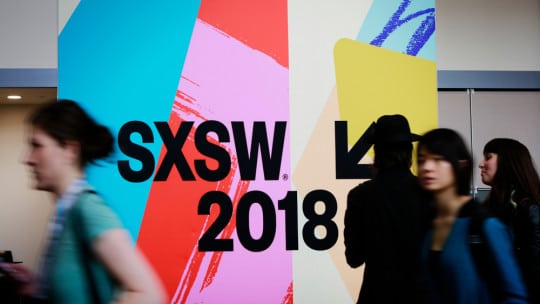
South by Southwest Interactive (SXSW), the 11-day behemoth for marketers in Austin, Texas, that ended March 17 is known for its convergence of the interactive, film and music industries. Beyond the celebrities and digital influencers, a master session schedule longer than a CVS receipt and flashy brand activations, what does it mean for communicators?
Reports of Social Media’s Death Are Greatly Exaggerated
One contrast was palpable. Academics, business leaders and executives on panels weighed in on how social media platforms spread misinformation, encourage polarization and promote hate speech. (Of course, you didn’t need to go to SXSW to hear these arguments.) Yet as social media’s negatives were explored ad nauseam during sessions, brands, influencers and the city of Austin were pumping out reams of content seeking to engage with attendees on social media.
Despite its troubles, social was king at SXSW. As we know, social’s growth requires brand communicators to evolve. This was especially true during SXSW, where the social conversation dominated. Fortunately, social was particularly helpful to communicators:
- Snapchat’s heat map was useful to view live video of activations across the city, band performances and celebrity sightings.
- Communicators checked #SXSW on Twitter for updates on the best parties, activations and locations of food trucks and possibly Matthew McConaughey’s mustache.
- Facebook and Instagram Live Story setups were ubiquitous, confirming the idea known well to communicators that Facebook’s and Instagram’s algorithms prefer to highlight and promote in-the-moment, live content. SXSW proved again it’s time to incorporate live-streaming interactions in your communications plans if your brand hasn’t done so already.
Virtual Reality Continues to Impact Our Lives
Virtual Reality (VR) was omnipresent at CES 2018. Ditto for SXSW, where VR became a high selling point that offered attendees immersive experiences through rich, digital environments.
Evidence included the Austin Convention Center, which hosted start-ups and tech whizzes promoting VR applications. One display created live music through manipulation of digital sound waves, another enabled attendees to experience medical procedures with pinpoint accuracy, a third simulated a life-like Jedi fight.
SXSW loves to feature VR immersion experiences and brands were up to the challenge. HBO created multiple experiential marketing extravaganzas for hit series Westworld and Silicon Valley. Upcoming sci-fi film Ready Player One, occupied multiple Austin locations, and its main activation featured an hour-long VR experience.
The entertainment industry was not alone in its use of VR or its ability to mount mind-boggling activations. Helicopter manufacturer Bell staged an activation that tapped VR to promote its Air Taxi passenger experience.
Certainly there are hurdles --budget being near or at the top of the list--yet SXSW showed it’s only a matter of time until brands evolve VR into mind-boggling experiences.
Own Thought Leadership
For PR planning, SXSW doesn’t provide an official media list, but there’s a workaround. Attendees with official badges gain access to the SXSW online directory. Communicators used this directory to identify influencers.
At Bell we invited influencers found on this directory, as well as our social community, to a hosted Twitter chat (#UrbanAirChat) about the future of urban air transportation. This thought leadership story resulted in several media outlets recording the chat and requesting interviews from Bell’s Innovation Team.
As brand communicators, we need to continually develop our tactics and PR plans to create measured, well-considered strategies that promote thought leadership. In turn, SXSW helps us recognize those experiential communication models and challenges us to rightfully earn our voice.
David Wolpert is social media manager at Bell. Follow him at: @dfwolpert
